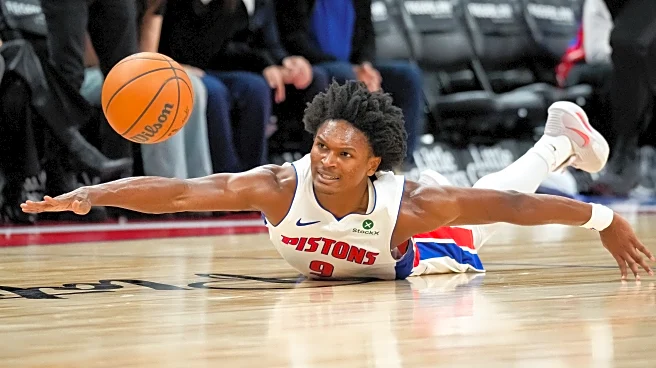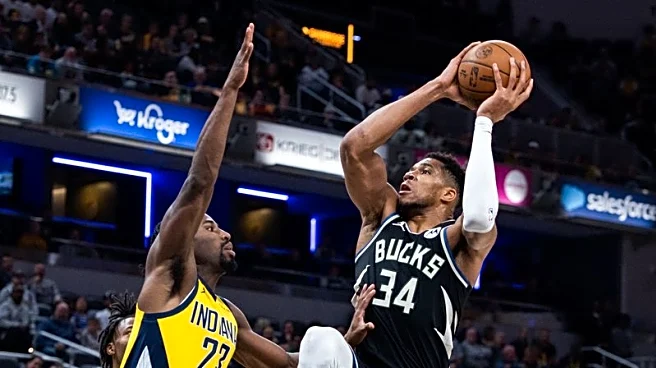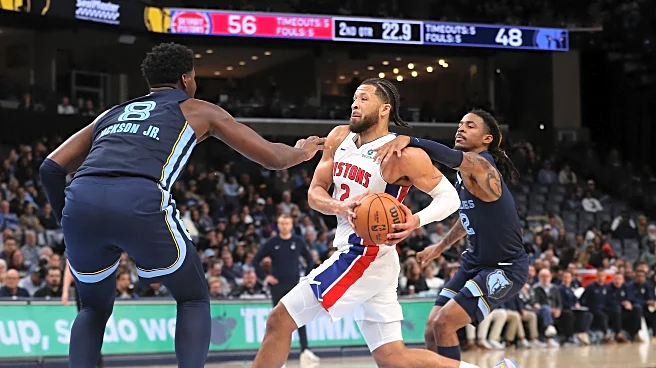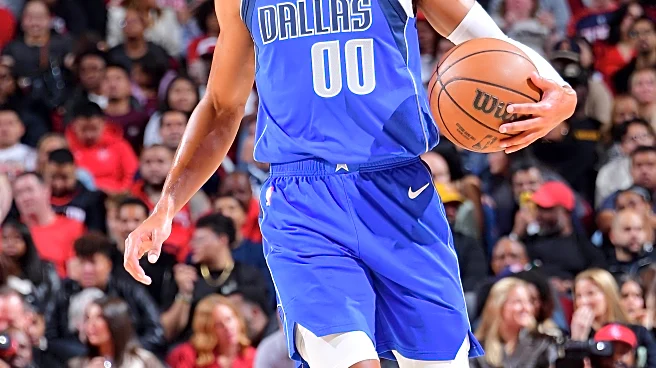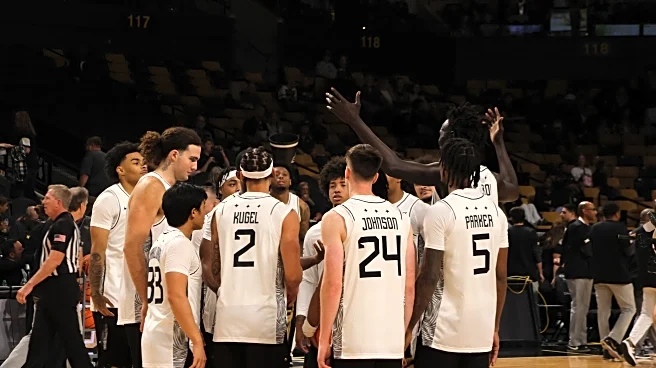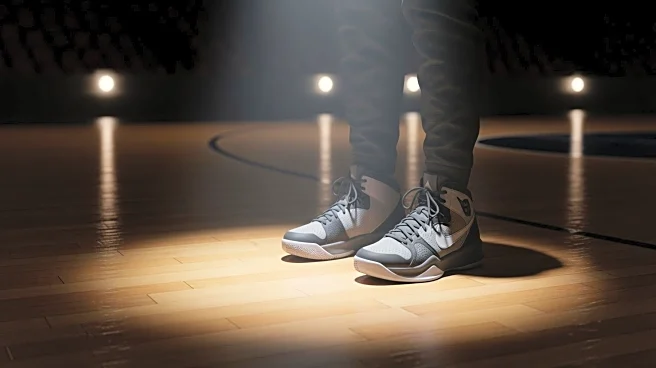The Detroit Pistons are seven games into the season and boast a 5-2 record to this point. Thus far, there has been a lot to like about the team’s start, as they’ve shown resilience in battling through
foul trouble and injuries that have created unpredictable lineups. There have been “identity wins,” mixed with a couple of clunkers. With the season being less than 10 games old, we still have a lot to learn about this team, as conventional wisdom suggests that it takes roughly 20 games to get a proper sample size in the Association. While it might be wise to take things with a grain of salt, I’d like to present some initial thoughts on the team’s start. In honor of the team’s 5-2 record, here are five things I’ve liked, and two things I’m worried about thus far.
5 Things I Like
Cade Cunningham Remains “That Guy”
This one feels like cheating, yet it’s necessary to point it out for a few reasons. If there were any remaining questions surrounding Cunningham’s staying power after last season (there weren’t), then they surely have been answered now. The former Oklahoma State Cowboy has upped his impact on the game in virtually every way to start the 25-26 campaign. In addition to producing gaudy assist numbers and improving as a rim protector (he’s currently at 2 STOCKS per game), he’s just flat out taking over games when it matters. Look no further than Monday’s tilt against the Grizzlies, or last week’s contest against the Magic, and you will see a couple of fourth quarters in which Cade simply decided he’s the best player on the court, and there was no stopping them as he powered late runs in each game.
Even more encouraging, after a sloppy start, his turnovers have decreased in the last few games, and he appears to be learning how to manipulate defenses based on how they adjust their coverage of him. For example, when being blitzed, he has shown distinct improvement in recognizing the double team early and simply getting rid of the ball before the defenders can fully converge on him. This has not only reduced his turnovers, but also allowed his teammates to take advantage of the natural 4-on-3 situation that arises when he is doubled near half court. In the past, he may have pressed by trying to dribble through it. He looks far more comfortable with taking what the defense gives him now. And by the way, this is how the upper echelon of star creators (the Lukas, the LeBrons and Stephs) use the defenses’ emphasis on them to create advantages for their team. The fact that Cunningham seems to be learning this means great things for Detroit. If I had to nitpick one concern, his efficiency is down, but let’s see where those numbers are in a month or two before panicking.
Point Ausar is Real
Outside of Cunningham, the biggest individual takeaway is the on-ball creation of Ausar Thompson. While he has always possessed tantalizing talent, Ausar often struggled to maintain control during his first two seasons and appeared unsure of himself with the ball in his hands. With Jaden Ivey, Marcus Sasser, and Caris LeVert all missing significant time due to injury to start the year, Thompson has been thrust into an on-ball role by necessity, and I don’t think anyone could have imagined the returns being much better to this point. The handle is noticeably tighter, and his decision-making has been a revelation for this team. You could see his real growing-up moment come in the Houston game. The team was saddled with foul trouble, as both Cunningham and Ron Holland were on the bench, and Levert was injured. During a critical stretch in the second half, we watched Ausar meet the moment in real time, realizing he was the only creator out there, and he responded by scoring and assisting at will to keep the team in the game on their way to an impressive road win. More than that, though, he has managed to take care of the ball with the increased usage and keep a greater than 2:1 assist-to-turnover ratio.
Perhaps no one has benefited more from Thompson’s increased usage than Cunningham. The Overtime Elite product’s improved facilitation has allowed Cade to score more easily in the halfcourt, as it has gifted him more opportunities to score off the move, or in the midpost, with Thimpson often setting him up. He’s also gotten easier hoops just by running the floor in transition, and letting the lightning-fast Thompson find him. I also believe this is directly responsible for Cunningham’s improved defense, as Thompson makes it so he is not asked to bring the ball up 94 feet on every single offensive possession, leaving him with more energy for the other end of the floor.
The Identity is Real and Here to Stay
Some people, including myself, were concerned with how losing veterans like Tim Hardaway Jr., Dennis Shröder, and Malik Beasley would impact the team’s culture. Though it is early, I think it’s more than fair to say those concerns have proven to be overblown.
Look no further than the team’s win over Orlando last week, and you’d see an identity formed on ruggedness and grit last season back on full display. It was in that game that it became clear the identity had permeated the team’s young core and is here to stay. The Magic were a trendy off-season pick to make a leap in the depleted Eastern Conference this coming season, and in many cases, they were picked to leapfrog the Pistons, who are of a similar age and timeline. From the opening tip, you could sense that the Pistons knew this and relished the opportunity to stand chest to chest with the Magic and prove everyone wrong. They carried themselves with a real swagger and played downright nasty from start to finish. It started on defense, as time after time down the court, the Pistons had infinite bodies to throw at Orlando star Paolo Banchero, frustrating him and other ball handlers with physicality, and blocking shots, even after the whistle. There was a real psychological edge that the team had on their foe that night. Yes, Cunningham had an unbelievable fourth quarter in that game, but the Magic looked worn down both mentally and physically long before then. There was jawing, even from the normally mild-mannered Tobias Harris. They took the matchup personally, and it brought out the best in them. The skirmishes from last season have carried over, though Detroit seems more capable of knowing where the line is and not crossing it. The type of team that the Pistons want to be was on full display, and it was a true statement over their conference peers. This, above all other takeaways, should have fans excited.
Transition Scoring
One of Detroit’s biggest advantages is the breadth of athletes that it has who are capable of doing damage in the open floor. This has started on the defensive end, as they rank 10th in the league in forced turnovers at 15 and a half per game. This has allowed guys like Ausar Thompson, Ron Holland, and Jalen Duren to get out in space and do what they do best. Due to spacing issues in the halfcourt (more on that later), this has become a legitimate staple of the team’s offensive attack. It’s part of a logical plan to help Detroit’s best players play to their strengths, but it starts on the defensive end. Established defenders such as Thompson, Holland, and Stewart continue to rack up steals and blocks, but guys like Cunningham and Duren have also upped their game on that end. If the team can sustain this type of pace, it will bode well for their ability to endure the normal peaks and valleys of the season and the injuries and cold streaks that can come with it.
Duren has solidified himself as a real piece
During the first half of last season, the fan base seemed to be just about out on Detroit’s young starting center. He seemed to be chronically overwhelmed on defense and not playing as hard as he could all the time. And then, a switch flipped, and he finished the season strong, and carried that strong play into a more than solid playoff showing against the Knicks.
Fast forward to this year, and Duren seems to have taken it up another level. The chemistry with Cade continues to impress, and their connection on lobs truly sets the table for everything else in the half-court offense. This is a legitimate part of their offense. It’s almost like running the ball in football; they go to it early and often, and it then creates gravity and spacing for everything else that they want to do. Even more so, he has become more trustworthy with the ball, as he looks to be more decisive in making quick, one-move decisions in the post and making the right plays in the open floor or when facing up. He just appears more under control, and when watching the games, you just trust that something good is going to happen when he has the ball now more than ever before.
Better than all of that? His defense is getting better. He’s at nearly 3 STOCKS per game, and has demonstrated improvement in defending wings or mobile bigs in space. The effort continues to improve too, as he is often getting easy points by outrunning his man down the floor and getting an easy dunk or putback. He has solidified himself as the team’s starting center for years to come, there’s really no doubt now. He will likely be rewarded financially next summer if he keeps his current play up.
Two Things I Don’t Like
Spacing Concerns
Detroit has gotten by with its aforementioned opportunistic defense and potent transition game, but the team’s long-distance shooting has left a lot to be desired. Currently, they are below league average in percentage at 34%. This has perhaps been slightly propped up by a traditionally below-average shooting Javonte Green starting the season on a tear from deep at 41%, which is almost 7 percentage points above his career average. Outside of Duncan Robinson and sprinkles of Isiah Stewart and Tobias Harris, the team has lacked shooting that could become a bigger problem as the year goes on. In the dog days of the season, can this roster withstand cold shooting and survive on nights when their pace is slower? It is a concern that is worth keeping an eye on.
Lack of Bucket Getters
This is something to monitor, as outside of Cade, the roster lacks a second player that you consistently trust to go get his own shot when things break down. This puts a lot of pressure on Detroit’s franchise player and makes them easier to defend. Perhaps the remedy to this is as simple as getting Ivey and Sasser back healthy and allowing Levert to find his footing. Nonetheless, it’s been an issue that stands out through 7 games.
Now it’s your turn: What did I get right, and what takeaways did I miss?





